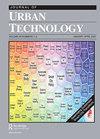自动驾驶汽车将把我们带向何方?
IF 4.4
3区 经济学
Q1 URBAN STUDIES
引用次数: 1
摘要
新的交通或移动技术具有颠覆社会、经济和政治格局的力量,一个多世纪前汽车的引入就是一个例子(Brown et al., 2009)。由此产生的累积影响极大地改变了人们生活、工作和聚集的方式和地点。随着城市塑造和被主流交通选择塑造,自动驾驶汽车的到来预示着一个新的移动时代,因此对城市社会和形式产生了新的影响。迄今为止,大多数关于自动驾驶汽车的研究都解决了车辆设计的工程挑战,而其社会影响在很大程度上被忽视了(Yurtsever等人,2020)。通常,在分析社会背景和理解影响之前,新的移动技术就已经推出了(Butler等人,2020a;Kassens-Noor et al. 2020)。本期《城市技术杂志》特刊介绍了这些新的自动驾驶技术的最新研究,以及它们如何与城市社会相互作用。目前,自动驾驶汽车符合薛定谔的思想实验,根据观察者的观点,它既有积极的一面,也有消极的一面(Moore, 2015)。其优势包括安全性、减少出行的可能性、为年轻人、老年人和残疾人提供便利,以及将停车位用于更高效的用途(Butler等人,2020b)。相比之下,缺点可能包括增加旅行,边缘化和排斥,如果不是所有地区都得到平等的服务,以及将车辆作为核心模式的关注,而不是包括步行到自动驾驶汽车的广泛定义(yigitcanar等人,2019)。使用自动驾驶汽车的结果取决于人和政策,以及个人和机构如何应对自动驾驶汽车提供的机会(Kassens-Noor et al., 2021)。具有相似特征的城市,根据各自的自动驾驶汽车政策,很可能会形成不同的城市景观。我们对论文的要求范围很广,已经产生了九篇文章,这些文章提出了当前文献中出现的几个主题。这期杂志的部分内容代表了自动驾驶汽车的语言和文学,美国和欧洲试点项目的经验教训,以及新形式的移动出行的政策反应和影响。本文章由计算机程序翻译,如有差异,请以英文原文为准。
Where Are Autonomous Vehicles Taking Us?
New transportation or mobility technologies have the power to disrupt the social, economic, and political landscape, exemplified by the introduction of the automobile over a century ago (Brown et al., 2009). The resultant and accumulated impacts had significantly changed how and where people lived, worked and gathered. As cities shape, and are shaped by, prevailing transportation options, the arrival of autonomous vehicles suggests a new era of mobility and therefore new influences on urban society and form. To date, most of the research on autonomous vehicles has addressed the engineering challenges of vehicle design, while the social implications have been largely ignored (Yurtsever et al., 2020). Often, the new mobility technologies are launched before the social context has been analyzed and implications understood (Butler et al., 2020a; Kassens-Noor et al. 2020). This special issue of the Journal of Urban Technology presents current research on these new autonomous driving technologies and how they interact with urban society. Currently, autonomous vehicles fit Schrodinger’s thought experiment by being both positive and negative depending on the observer’s perspective (Moore, 2015). Advantages include safety, potential for reduced travel, access for young, old, and those with disabilities, and parking spaces returned for more productive use (Butler et al., 2020b). In contrast, disadvantages may include increased travel, marginalization and exclusion if not all areas are served equally, and a preoccupation with vehicles as the core mode instead of a broad definition encompassing walking to autonomous vehicles (Yigitcanlar et al., 2019). The outcome of the use of autonomous vehicles depends on people and policy, and how individuals and institutions react to the opportunities autonomous vehicles provide (Kassens-Noor et al., 2021). Cities with similar characteristics may well result in different urban landscapes depending on their autonomous vehicle policies. Our call for papers was broad in scope and has resulted in nine articles that present several themes emergent in the current literature. The sections of this issue represent the language and literature of autonomous vehicles, lessons from pilot programs in the United States and Europe, and the policy response and implications of new forms of mobility.
求助全文
通过发布文献求助,成功后即可免费获取论文全文。
去求助
来源期刊

Journal of Urban Technology
URBAN STUDIES-
CiteScore
8.50
自引率
4.20%
发文量
42
期刊介绍:
The Journal of Urban Technology publishes articles that review and analyze developments in urban technologies as well as articles that study the history and the political, economic, environmental, social, esthetic, and ethical effects of those technologies. The goal of the journal is, through education and discussion, to maximize the positive and minimize the adverse effects of technology on cities. The journal"s mission is to open a conversation between specialists and non-specialists (or among practitioners of different specialities) and is designed for both scholars and a general audience whose businesses, occupations, professions, or studies require that they become aware of the effects of new technologies on urban environments.
 求助内容:
求助内容: 应助结果提醒方式:
应助结果提醒方式:


